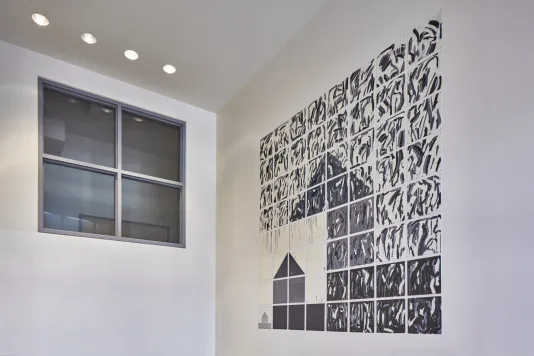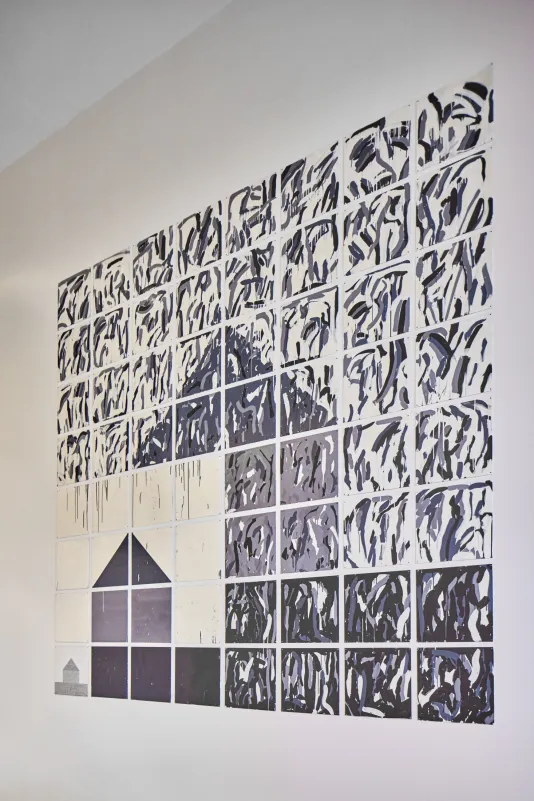Jennifer Bartlett, Overhill Road, Shawnee Mission, 1977. Gift of the Albert & Vera List Family Collection. Photo: Charles Mayer Photography
Overhill Road, Shawnee Mission, 1977

In 1968, responding to the modular forms and industrial non-art materials prevalent in Minimalism, and inspired by New York City subway tiles, Jennifer Bartlett started using twelve-inch-square steel plates coated with baked enamel as the building blocks of her art.
Throughout the following decades, she worked extensively with the plates to create multipart compositions ranging from relatively simple pairs to an extravagant 987-unit installation. While this material facilitated systematic, abstract uses of a grid, Bartlett also incorporated representational elements into her pieces, with motifs ranging from houses and oceans to lines and dots.
Overhill Road, Shawnee Mission (1977) is a prime example of Bartlett’s interests, demonstrating the merging of her early geometric abstractions with her subsequent lush and painterly figuration. The plates are hung in eight columns and rows to construct an overall square. This rigid organization contrasts with the fluid expressivity of the mark-making. From the regularly gridded small dots that compose the schematic house in the lower left corner, the eye moves along an upward diagonal to an intermediary mode of representation with solid planes up to the largest, central version of the house, seemingly eroded and teeming with brushstrokes. These strokes create an atmospheric flickering sky in the top half of the work but suggest a cavernous interior at the lower right. For Bartlett, the house is a “banal but poignant” image, one she has studied through a variety of painting styles, from Impressionism to Abstract Expressionism.
Jennifer Bartlett (1941–2022) was born in Long Beach, CA, and studied art at Yale University. She has exhibited her work at prominent museums across the United States and at numerous local institutions, including Harvard University and Brandeis University. Bartlett lives and works in Brooklyn, NY.
*Note - this artwork is only accessible to the public by guided tour.
